Applauded today as the most secure coin in circulation, the UK £1 coin has a 500-year history as a numismatic pioneer. The current 12-sided coin is a symbol of cutting-edge twenty-first-century technology, yet the coin’s beginnings go all the way back to the Tudor period.
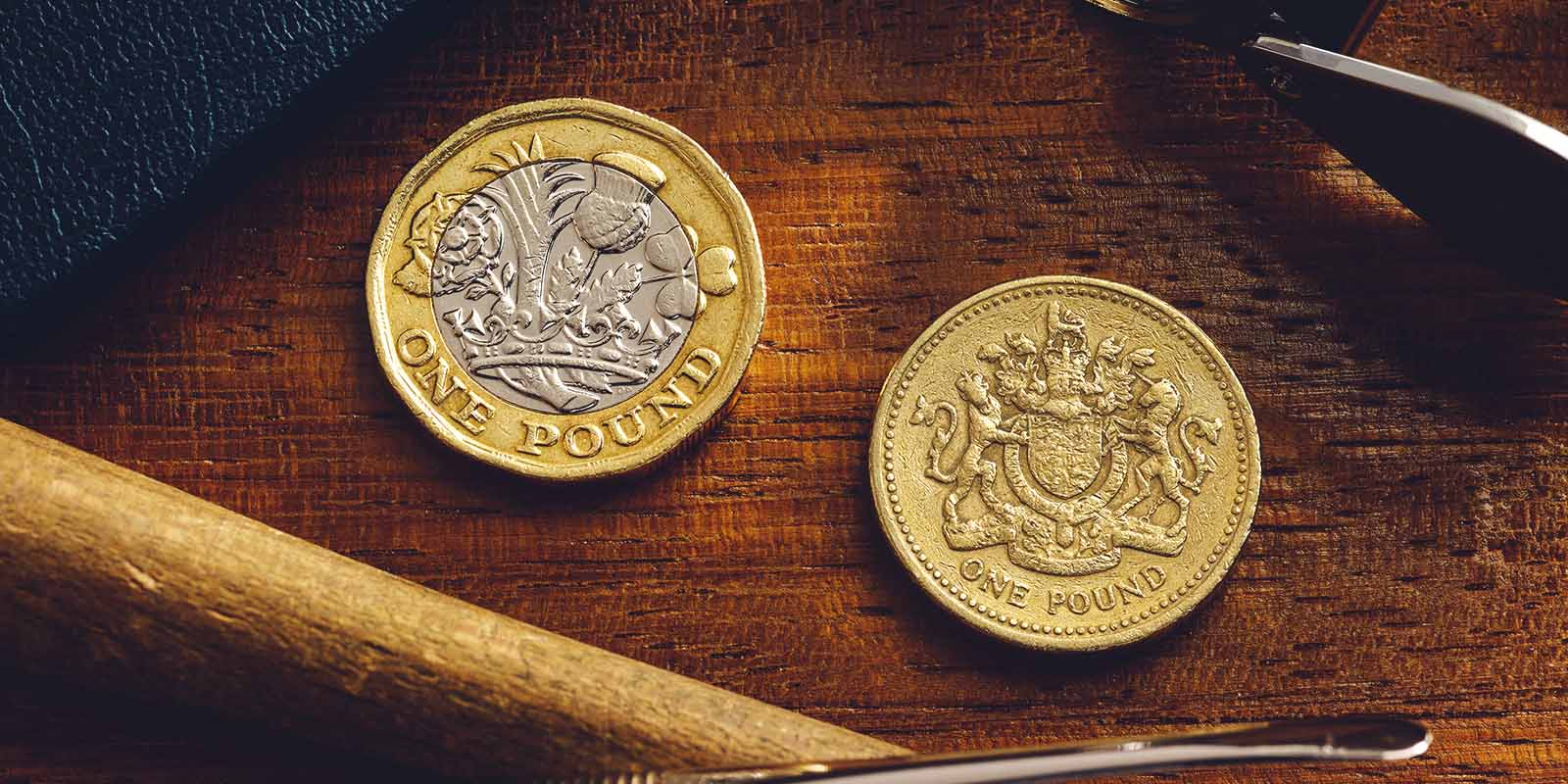
When Henry VII became king, he was determined to display the power and wealth of his new court; in 1489, he introduced the largest gold coin in England at the time. Named the Sovereign, it had a value of 20 shillings and was England’s first £1 coin. During the reign of James I, the Sovereign was replaced with a new gold coin called the unite, which in turn was later replaced by Charles II with the guinea. The first gold guineas issued had a value of 20 shillings but were later worth a higher value. By the end of the eighteenth century, gold was needed to finance wars with France, leading the Bank of England to introduce a £1 banknote in 1797.
The Sovereign returned in 1817, following a review of Britain’s coinage after the Battle of Waterloo. Designed by the Italian engraver Benedetto Pistrucci, it features a portrait of George III on the obverse and a depiction of St George and the dragon on the reverse. It went on to be considered Pistrucci’s masterpiece and by the end of the nineteenth century, the modern Sovereign had gained a reputation as the ‘chief coin of the world’ due to its accuracy and precision.
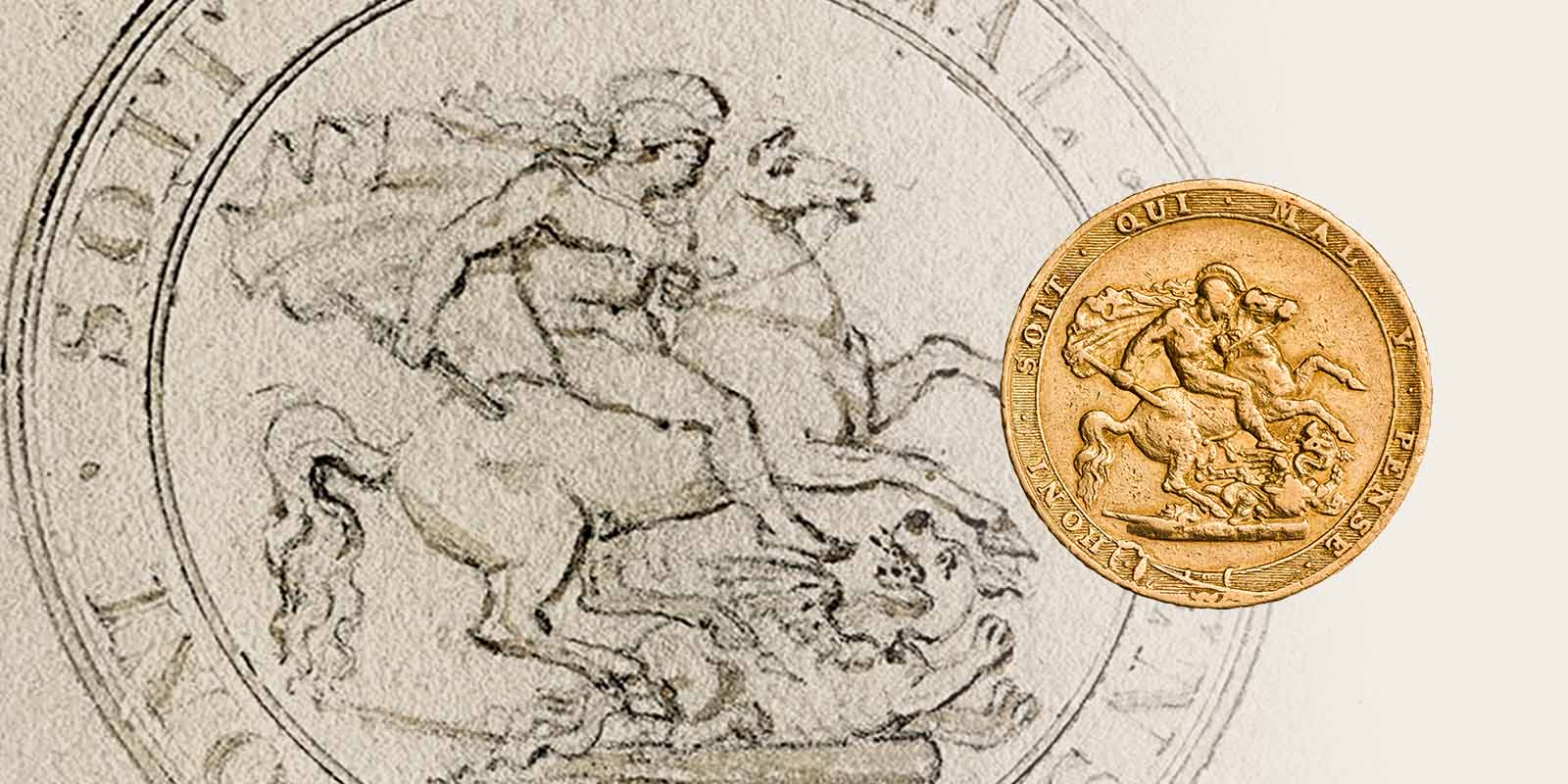
However, not even The Sovereign could survive the impact of the First World War. Members of the public were asked to contribute gold coins to the war effort and posters were designed featuring the following slogan: ‘The British Sovereign Will Win’. On 7 August 1914, HM Treasury issued two notes, one with a value of£1 and one of 10 shillings, to replace the coins. By summer 1915, gold was no longer a part of the nation’s coinage and by 1918, production of The Sovereign ceased altogether in the United Kingdom.
The £1 banknote went through a number of design changes during the twentieth century. The Bank of England’s pictorial Series D included the final £1 banknote, which was first issued on 9 February 1978. The front featured a portrait of Her Majesty The Queen by the renowned artist and etcher Harry Eccleston, whilst the back displayed Eccleston’s portrait of the pioneering scientist and Master of The Royal Mint Sir Isaac Newton.
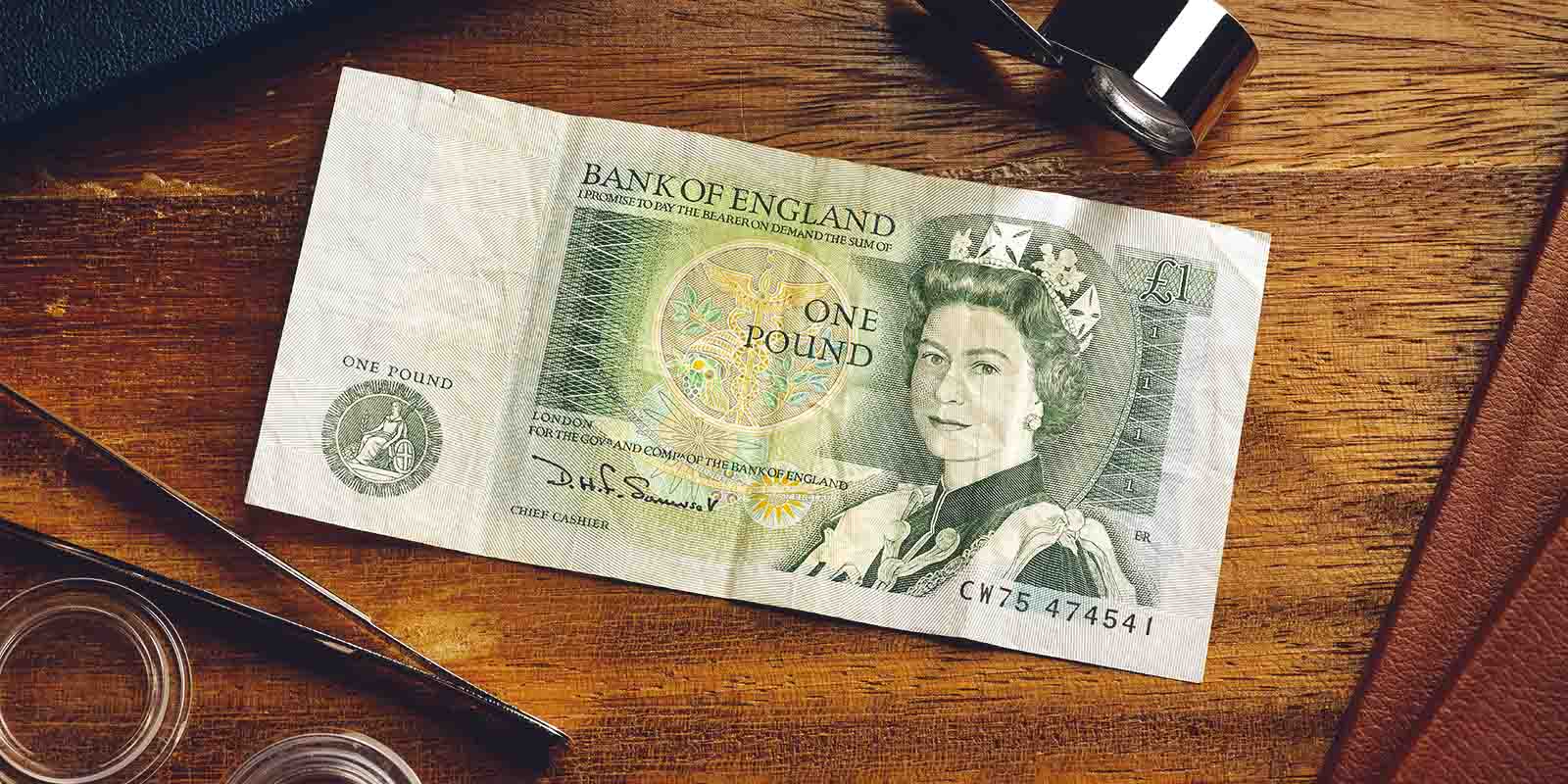
By the late 1970s, the average lifespan of the £1 banknote had fallen to around nine months, as inflation led to a rise in its daily use. The idea of a £1 coin was considered as part of a review of the nation’s coinage, and at the end of 1979, The Royal Mint developed early trial pieces. Dated 1983 to show that this was always the intended date of issue, the pieces featured a mock reverse design by Chief Engraver Eric Sewell.
The new £1 coin was presented to the then Prime Minister Margaret Thatcher just before Christmas 1980 but, unfortunately, she was unimpressed. She described the coin as ‘chocolate money’ and predicted that it would be lost between the upholstery of settees and prove unpopular with the public. In a remarkable twist of fate, the prime minister suggested that a more suitable shape for the new coin would be that of the pre-decimal, 12-sided threepence. More than 30 years later, a12-sided £1 coin was introduced.
On 27 January 1981, it was announced that a £1 coin was to be issued and production began in April 1982, when His Royal Highness The Prince of Wales visited The Royal Mint to strike the first coin. On 21 April 1983, we issued the ‘round pound’ coin and despite some resistance, including a brief campaign by the Daily Mail to scrap the coin, it circulated in tandem with the £1 banknote until 11 March 1988, when the banknote ceased to be legal tender.
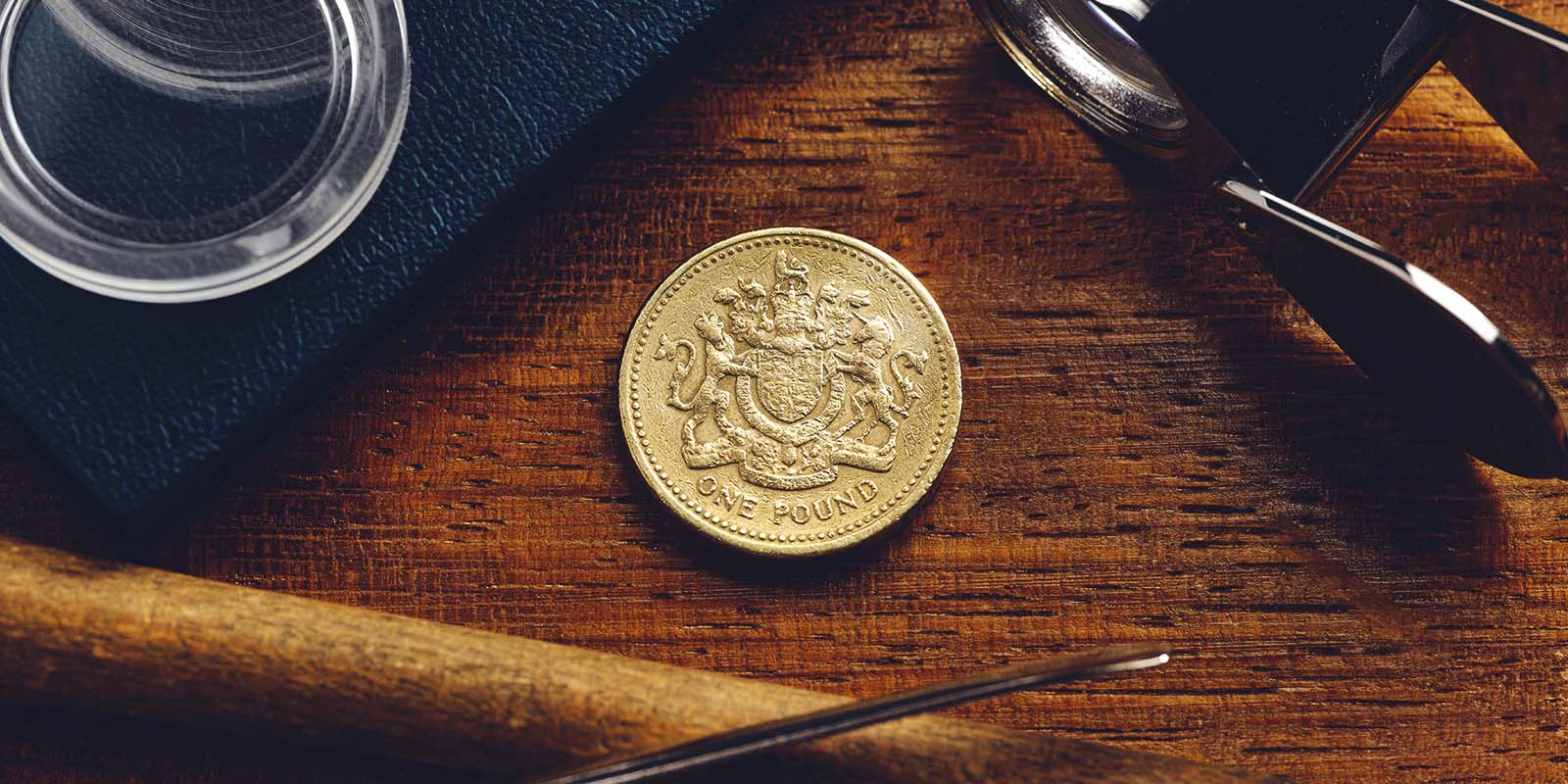
The introduction of a new, 12-sided UK £1 coin in 2017 was more favourably received, largely due to the use of the internet and social media to drive publicity. By early 2014, HM Treasury accepted the need for a new, secure coin to combat the increasing number of counterfeit coins in circulation, and we launched a national competition to find the reverse design. From more than 6,500 entries, the winning entry came from 15-year-old David Pearce, whose design featured a thistle, shamrock, leek and rose emerging from a Royal Coronet to represent the United Kingdom.
The first 12-sided UK £1 coin was issued on 28 March 2017 and has a range of covert and overt security features, including micro-lettering and a hologram that changes from ‘£’ to ‘1’. In 2015, David Pearce was invited to a special reception at Downing Street, where the then Chancellor of the Exchequer George Osborne described the design as ‘a brilliant opportunity to leave a lasting legacy on what will be the most secure circulating coin, anywhere’.
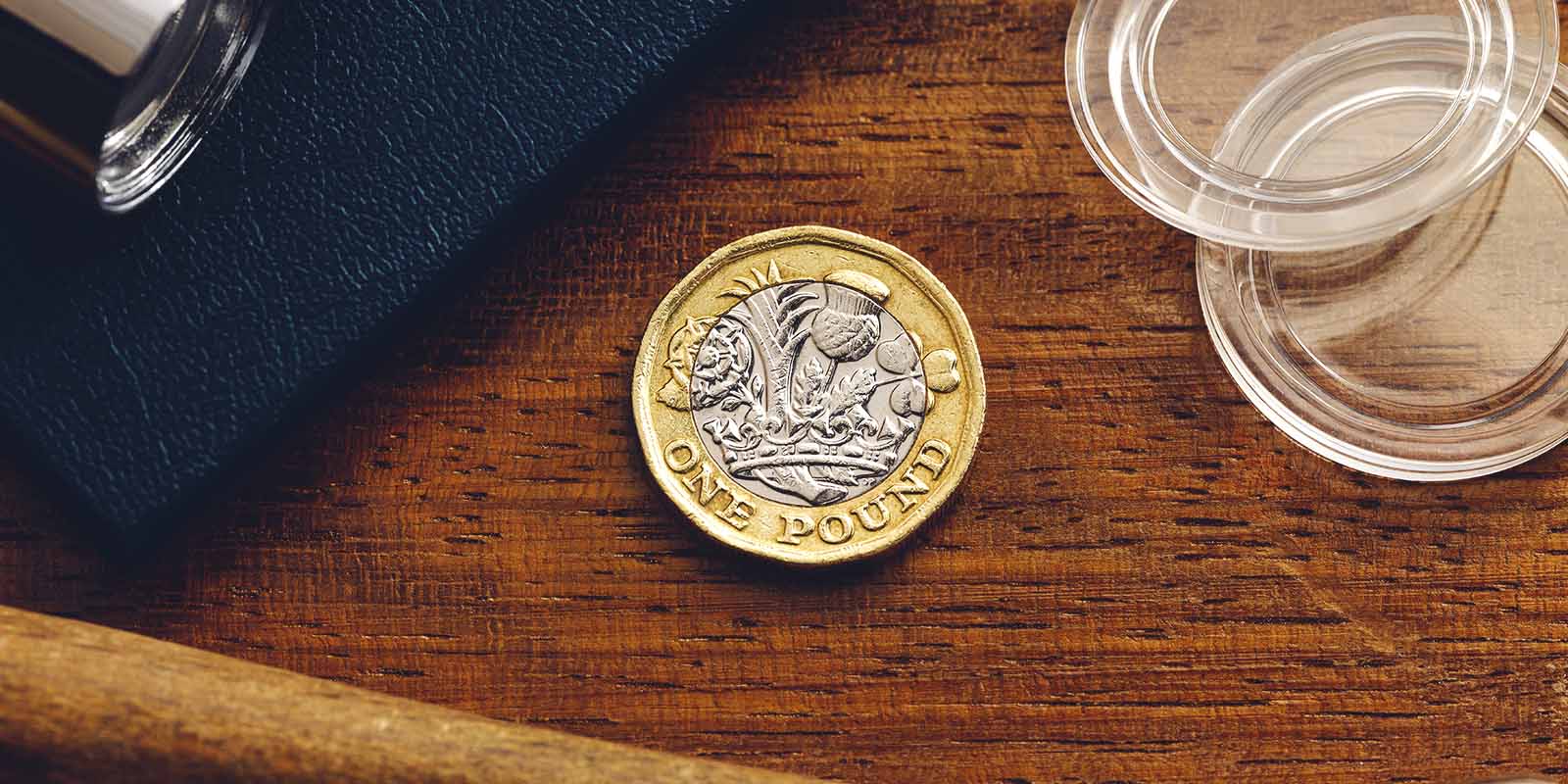
The £1 Coin & Banknote Set
Over the centuries, the UK £1 coin and banknote have been through many guises. Each has evolved in response to national and world events, with the current 12-sided UK £1 coin known as ‘the most secure coin in the world’. This set includes one UK £1 coin dated 1983, one dated 2016, and a Bank of England £1 banknote from the Series D pictorial range of banknotes.
Comes with a booklet telling the coin’s story, from the Tudor period to the modern day
Find out more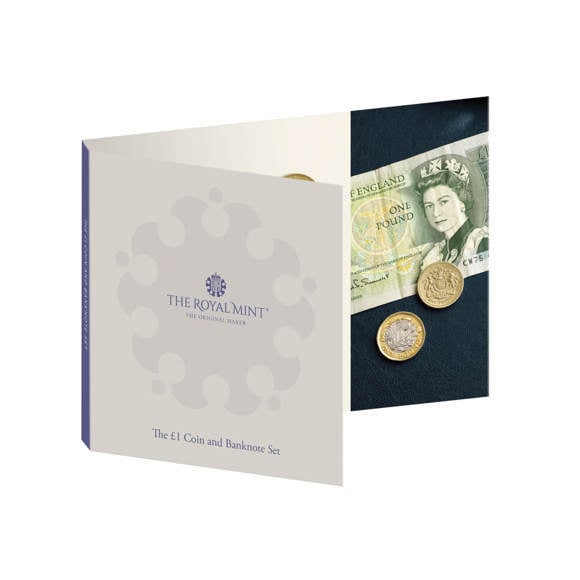
The £1 Coin & Banknote Set
Celebrate the History of the UK £1 Coin
Price: £45.00
